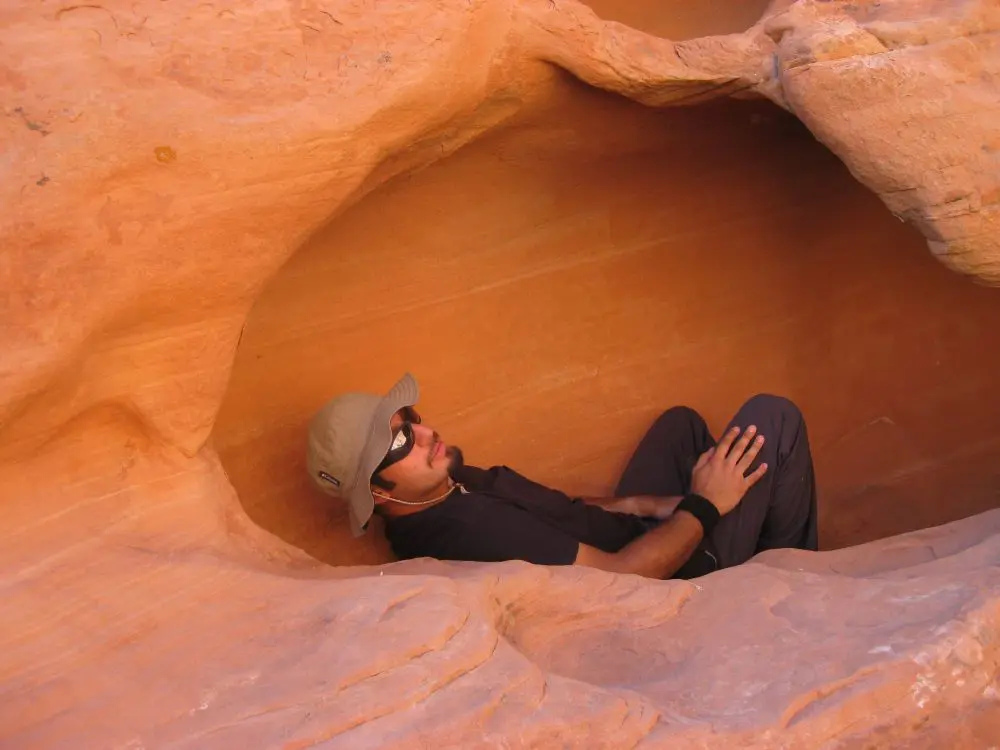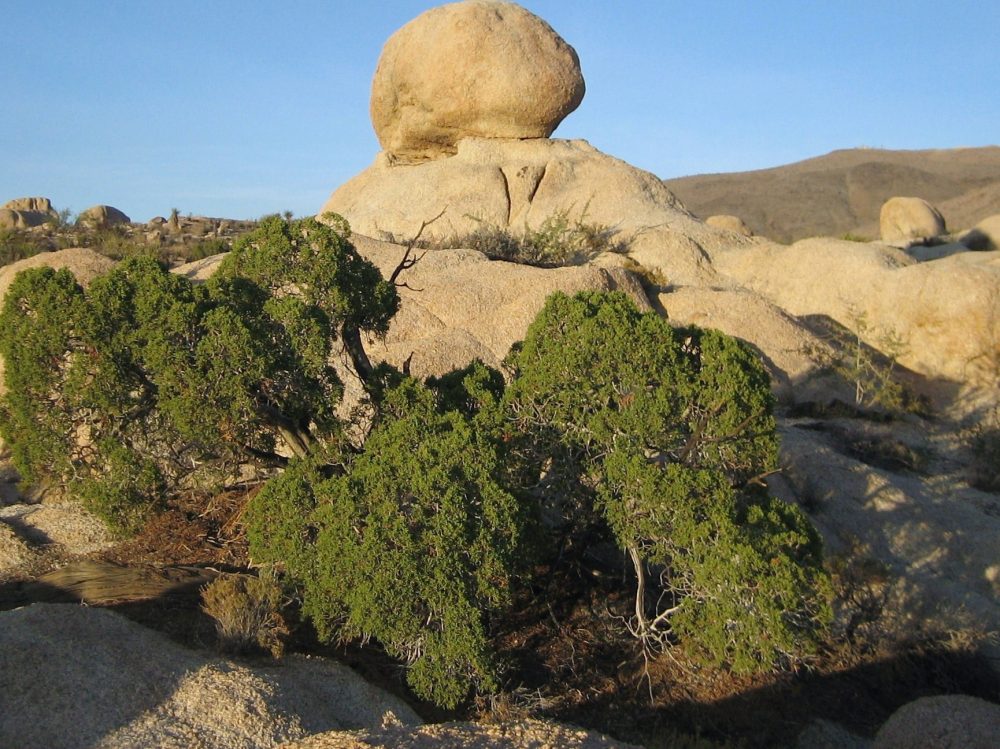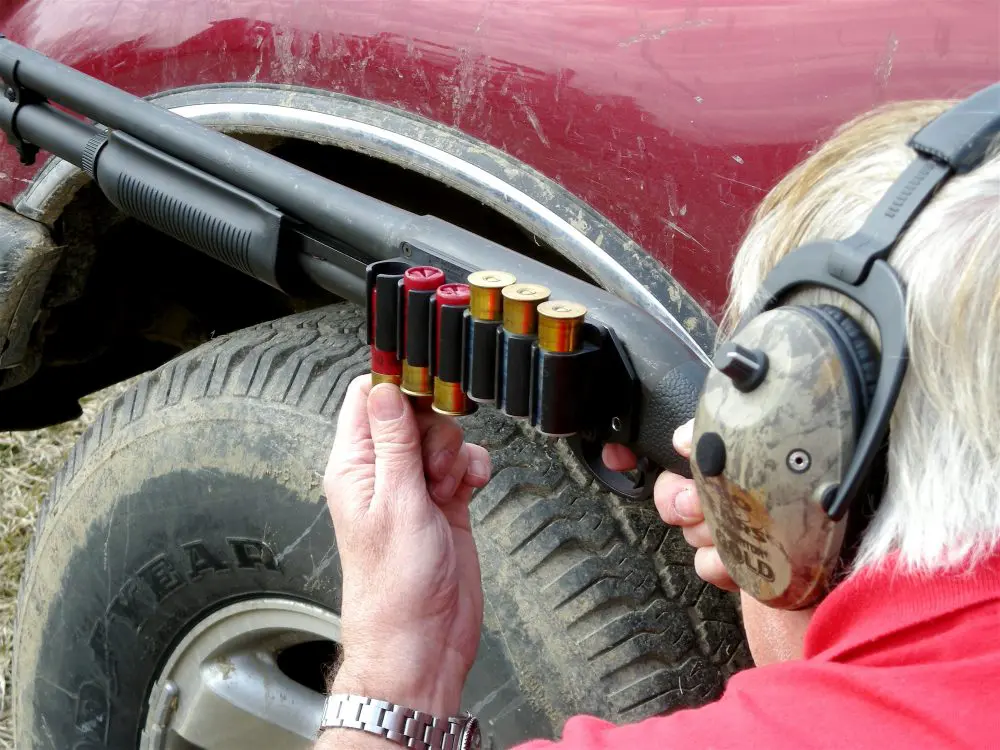A great desert shelter is a rock shelter or cave large enough to both sit up and lie down flat in. This offers the most coverage against wind, rain, and sun.
We’ve all seen the headline: “Hiker Lost in the Wild.” Although dramatic, it is an all-too-common occurrence. Spending a night out in the wilderness can be a great experience if planned, but even the best-laid plans can go astray.
People get lost in the wild for a number of reasons. We may all have had that feeling of a sudden loss of orientation at one time or another. It doesn’t take much before the feeling of panic strikes. More than wild animals and the boogeyman, there is nothing more dangerous than the environment. The truth is that most people who perish in the wilderness do so from exposure. Weather can quickly change, and what started out as a clear, sunny day can easily end up a long, cold, snowy night—an experience I know all too well.
What follows are a few simple but hopefully useful tips to help maximize your chances of enduring an unexpected night in the wild.
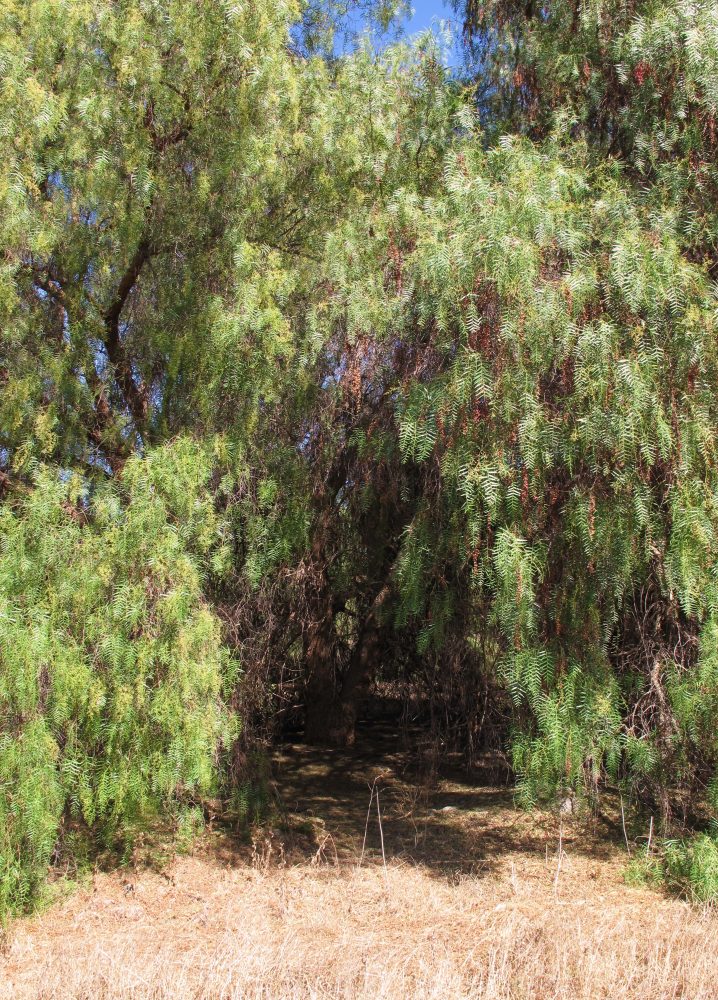
Table of Contents
WOODED FORESTS
Your first line of defense against the elements is your clothing. Clothing provides much-needed insulation from the heat and cold, so don’t remove any. This rule applies to all environments, and you should plan your clothing around a worst-case scenario “just in case.”
It is written in many books and shown in many survival videos that, if you are in North America, you should search for a campsite that faces south. However, if you are lost and without a compass or do not possess any navigation skills, getting out of the elements matters more.
Most mountain ranges offer a variety of natural shelters. The most common are fallen trees, caves, and rock overhangs. Large trees with low-hanging limbs and fallen trees with thick branches, such as spruce, pine and juniper, can easily be used as natural shelters. It doesn’t take any work to hunker down under their large branches.
In rain and snow, you can generally stay drier near the base of the tree. This is more visible when snow is on the ground, as there is usually an area void of snow and moisture. Take advantage of thin branches and pine needles, as they make excellent bedding and insulation.
A hollowed-out log can make a suitable shelter if you are not claustrophobic (and if you are, get over it—this is a survival situation!). Fill the hollowed-out log with as much debris as you can for insulation and some degree of comfort.
In the winter snow, these same shelters can be used, but more emphasis needs to be put on ground insulation, since you will lose most of your body heat to the cold ground beneath you.
Don’t overlook large rocks on leeward hillsides, as they can offer great relief against the wind. Boulders can sometimes be found arranged in a way that offer protection on three out of four sides plus overhead.
In the desert, where rain isn’t a huge issue, this tree break will provide much-needed shade against the sun.
DESERTS
Juniper trees are found in some deserts and, if they can be located, they offer a great deal of shade. However, don’t hunker down under a juniper tree, or any tree for that matter, and expect to stay bone dry in the rain. A tree will, however, offer shade from the sun and protection from wind.
Rock shelters, in my opinion, are the best natural shelter you could hope for in an emergency. They are often well-shaded, keeping you out of the direct desert sun, and offer maximum protection from wind and rain. If you can find a rock shelter that is tall enough to sit up in and long enough to lie down flat in with your legs straight, you are off to a good start. Keep in mind that selecting a larger cave will make it harder to keep warm in the cold months than a smaller one, but in a survival situation, beggars can’t be choosers.
Creating a fire inside these types of rock shelters can be dangerous. You must warm up the small area slowly so as not to wake up the angry rock gods and cause them to chip off and crush you while you sleep. Any natural shelter can be enhanced by building a small rock wall in front of a cave or rock overhang to cut down on wind and improve overall mental security.
Other dangers of rocky, desert locations are scorpions and snakes, so remember this when moving rocks around. Move them first with a big stick or your shoe before reaching for them with your hands.
In the summer months, flash floods can be killers. Even though the desert may be dry for the moment, in higher elevations there might be a storm that could cause floods. Take note of natural-looking drainage areas that might be subject to flash floods.
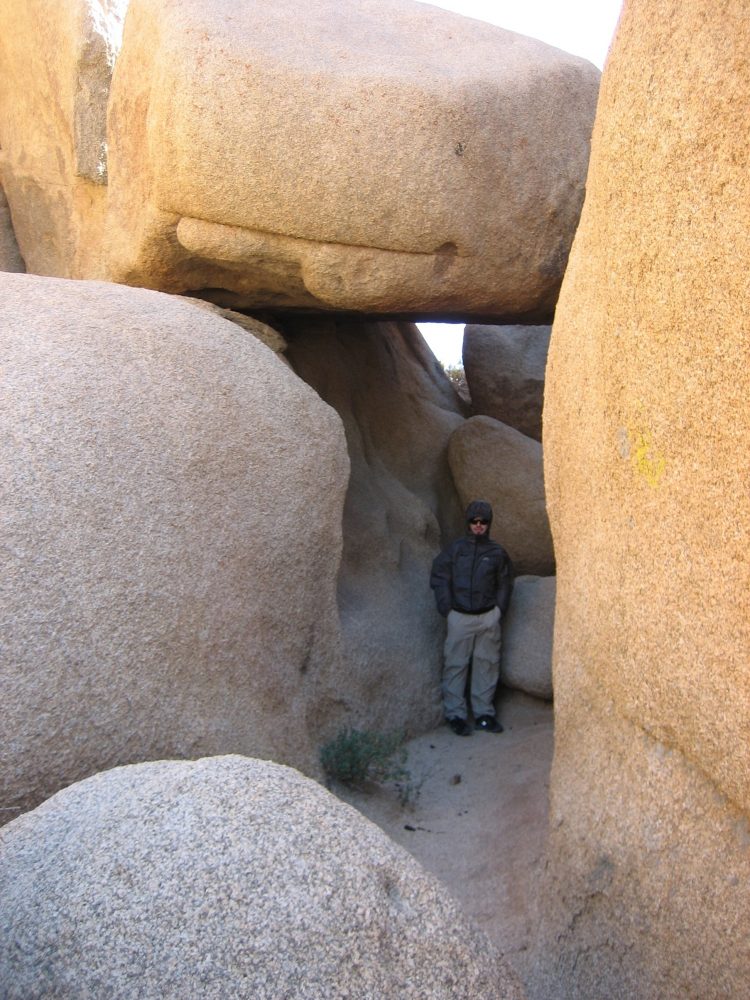
TROPICS
The tropics don’t have many places that offer the convenience of a quick and easy cave shelter or a hollowed-out tree.
While hunkering down under a tree with large leafy branches is not a problem, bugs are. I am speaking particularly of the king of the jungle—the mighty ant. I should say the mighty ant and her millions of ant cousins and creepy crawlers nearby that can make a peaceful night’s sleep nearly impossible. Your best bet is to pull together some materials that may be strewn across the jungle floor to make a hooch type of shelter.
To make a hooch shelter, find a tree with large, high, protruding roots tall enough to cover your back and sides. These types of trees are common in the jungles of South America and Asia. It is important to get as close into the tree trunk as possible, directly under the canopy for extra protection from the heavy jungle rains. The focus here, even more than staying dry, is to get off the floor and out of the reach of insects. This is arguably the one instance where keeping away from bugs takes priority over staying dry.
The jungle can get cold at certain times of the year, but heat seems to prevail, so hypothermia is usually not an issue. Make a sleeping platform from logs to get yourself off the ground and keep yourself dry if water starts to collect beneath you. Cover the platform with leafy green vegetation for padding. Next, find as many long sticks/poles as you can and lean them up against the base of the tree at a steep enough angle to cover the platform and to help shed rain once it is covered with branches. For the final step, add palm branches found on the ground and any other type of debris that you can collect and use them as thatching. If you don’t have a mosquito net, cover your exposed skin with mud.
SUMMARY
The outdoors can be a very unforgiving place. If you have no choice but to spend the night out in the wild, accept the reality of the situation early and give yourself enough time to search for a shelter.
In the December issue, we’ll discuss how to build simple shelters for use in wooded forests, deserts and the tropics.
